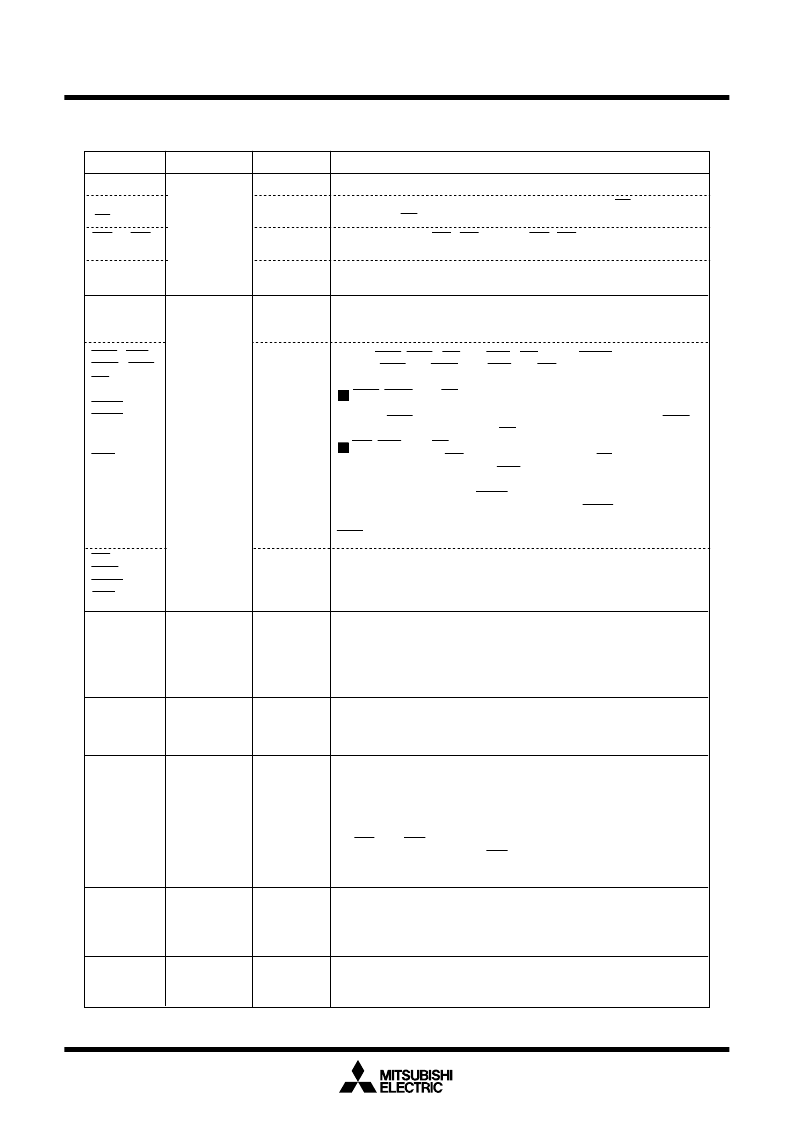- 您現(xiàn)在的位置:買賣IC網(wǎng) > PDF目錄370837 > M30800FGFP (Mitsubishi Electric Corporation) SINGLE-CHIP 16-BIT CMOS MICROCOMPUTER PDF資料下載
參數(shù)資料
| 型號: | M30800FGFP |
| 廠商: | Mitsubishi Electric Corporation |
| 英文描述: | SINGLE-CHIP 16-BIT CMOS MICROCOMPUTER |
| 中文描述: | 單片16位CMOS微機(jī) |
| 文件頁數(shù): | 9/317頁 |
| 文件大?。?/td> | 4621K |
| 代理商: | M30800FGFP |
第1頁第2頁第3頁第4頁第5頁第6頁第7頁第8頁當(dāng)前第9頁第10頁第11頁第12頁第13頁第14頁第15頁第16頁第17頁第18頁第19頁第20頁第21頁第22頁第23頁第24頁第25頁第26頁第27頁第28頁第29頁第30頁第31頁第32頁第33頁第34頁第35頁第36頁第37頁第38頁第39頁第40頁第41頁第42頁第43頁第44頁第45頁第46頁第47頁第48頁第49頁第50頁第51頁第52頁第53頁第54頁第55頁第56頁第57頁第58頁第59頁第60頁第61頁第62頁第63頁第64頁第65頁第66頁第67頁第68頁第69頁第70頁第71頁第72頁第73頁第74頁第75頁第76頁第77頁第78頁第79頁第80頁第81頁第82頁第83頁第84頁第85頁第86頁第87頁第88頁第89頁第90頁第91頁第92頁第93頁第94頁第95頁第96頁第97頁第98頁第99頁第100頁第101頁第102頁第103頁第104頁第105頁第106頁第107頁第108頁第109頁第110頁第111頁第112頁第113頁第114頁第115頁第116頁第117頁第118頁第119頁第120頁第121頁第122頁第123頁第124頁第125頁第126頁第127頁第128頁第129頁第130頁第131頁第132頁第133頁第134頁第135頁第136頁第137頁第138頁第139頁第140頁第141頁第142頁第143頁第144頁第145頁第146頁第147頁第148頁第149頁第150頁第151頁第152頁第153頁第154頁第155頁第156頁第157頁第158頁第159頁第160頁第161頁第162頁第163頁第164頁第165頁第166頁第167頁第168頁第169頁第170頁第171頁第172頁第173頁第174頁第175頁第176頁第177頁第178頁第179頁第180頁第181頁第182頁第183頁第184頁第185頁第186頁第187頁第188頁第189頁第190頁第191頁第192頁第193頁第194頁第195頁第196頁第197頁第198頁第199頁第200頁第201頁第202頁第203頁第204頁第205頁第206頁第207頁第208頁第209頁第210頁第211頁第212頁第213頁第214頁第215頁第216頁第217頁第218頁第219頁第220頁第221頁第222頁第223頁第224頁第225頁第226頁第227頁第228頁第229頁第230頁第231頁第232頁第233頁第234頁第235頁第236頁第237頁第238頁第239頁第240頁第241頁第242頁第243頁第244頁第245頁第246頁第247頁第248頁第249頁第250頁第251頁第252頁第253頁第254頁第255頁第256頁第257頁第258頁第259頁第260頁第261頁第262頁第263頁第264頁第265頁第266頁第267頁第268頁第269頁第270頁第271頁第272頁第273頁第274頁第275頁第276頁第277頁第278頁第279頁第280頁第281頁第282頁第283頁第284頁第285頁第286頁第287頁第288頁第289頁第290頁第291頁第292頁第293頁第294頁第295頁第296頁第297頁第298頁第299頁第300頁第301頁第302頁第303頁第304頁第305頁第306頁第307頁第308頁第309頁第310頁第311頁第312頁第313頁第314頁第315頁第316頁第317頁

deveopmen
Pin Description
Preliminary Specifications REV.D
Specifications in this manual are tentative and subject to change.
Mitsubishi microcomputers
M16C/80 (100-pin version) group
SINGLE-CHIP 16-BIT CMOS MICROCOMPUTER
9
Pin Description
Signal name
Function
Pin name
I/O type
I/O port P5
Input/output
Input/output
Input/output
Input/output
Input/output
Input/output
Input
Input/output
Input/output
I/O port P6
I/O port P7
I/O port P8
I/O port P8
5
I/O port P9
I/O port P10
P5
0
to P5
7
P6
0
to P6
7
P7
0
to P7
7
P8
0
to P8
4
,
P8
6
,
P8
7
,
P8
5
P9
0
to P9
7
P10
0
to P10
7
This is an 8-bit I/O port equivalent to P0. P5
3
in this port outputs a
divide-by-8 or divide-by-32 clock of X
IN
or a clock of the same
frequency as X
CIN
as selected by software.
Output
Output
Output
Output
Output
Input
Output
Input
This is an 8-bit I/O port equivalent to P0. When set for input in single
chip mode, the user can specify in units of four bits via software
whether or not they are tied to a pull-up resistance. In memory
expansion and microprocessor mode, an built-in pull-up resistance
cannot be used. Pins in this port also function as UART0 and UART1 I/
O pins as selected by software.
This is an 8-bit I/O port equivalent to P6 (P7
0
and P7
1
are N-channel
open drain output). Pins in this port also function as timer A
0
–A
3
,
timer B5 or UART2 I/O pins as selected by software.
This is an 8-bit I/O port equivalent to P6. Pins in this port also function
as UART3 and UART4 I/O pins, Timer B0–B4 input pins, D-A converter
output pins, A-D converter extended input pins, or A-D trigger input pins
as selected by software.
This is an 8-bit I/O port equivalent to P6. Pins in this port also function
as A-D converter input pins. Furthermore, P10
4
–P10
7
also function as
input pins for the key input interrupt function.
WRL / WR,
WRH / BHE,
RD,
BCLK,
HLDA,
HOLD,
ALE,
RDY
Output WRL, WRH (WR and BHE), RD, BCLK, HLDA, and ALE
signals. WRL and WRH, and BHE and WR can be switched using
software control.
WRL, WRH, and RD selected
With a 16-bit external data bus, data is written to even addresses
when the WRL signal is “L” and to the odd addresses when the WRH
signal is “L”. Data is read when RD is “L”.
WR, BHE, and RD selected
Data is written when WR is “L”. Data is read when RD is “L”. Odd
addresses are accessed when BHE is “L”. Use this mode when using
an 8-bit external data bus.
While the input level at the HOLD pin is “L”, the microcomputer is
placed in the hold state. While in the hold state, HLDA outputs a “L”
level. ALE is used to latch the address. While the input level of the
RDY pin is “L”, the microcomputer is in the ready state.
P8
0
to P8
4
, P8
6
, and P8
7
are I/O ports with the same functions as P6.
Using software, they can be made to function as the I/O pins for timer
A4 and the input pins for external interrupts. P8
6
and P8
7
can be set
using software to function as the I/O pins for a sub clock generation
circuit. In this case, connect a quartz oscillator between P8
6
(X
COUT
pin) and P8
7
(X
CIN
pin). P8
5
is an input-only port that also functions
for NMI. The NMI interrupt is generated when the input at this pin
changes from “H” to “L”. The NMI function cannot be canceled using
software. The pull-up cannot be set for this pin.
DW,
CASL,
CASH,
RAS
Output
Output
Output
Output
When accessing to DRAM area while DW signal is “L”, write to DRAM.
CASL and CASH show timing when latching to line address. When
CASL accesses to even address, and CASH to odd, these two pins
become “L”. RAS signal shows timing when latching to row address.
P4
0
to P4
7
I/O port P4
This is an 8-bit I/O port equivalent to P0.
Input/output
Output
Output
CS
0
to CS
3
These pins output CS
0
–CS
3
signals. CS
0
–CS
3
are chip select signals
used to specify an access space.
A
16
to A
22
,
A
23
Output
These pins output 8 high-order address bits (A
16
–A
22
, A
23
). Highest
address bit (A
23
) outputs inversely.
MA8 to MA12
If accessing to DRAM area, these pins output data separated in time by
multiplexing.
相關(guān)PDF資料 |
PDF描述 |
|---|---|
| M30800FGGP | SINGLE-CHIP 16-BIT CMOS MICROCOMPUTER |
| M30800MG-XXXFP | SINGLE-CHIP 16-BIT CMOS MICROCOMPUTER |
| M30800MG-XXXGP | SINGLE-CHIP 16-BIT CMOS MICROCOMPUTER |
| M32000D3FP | SINGLE-CHIP 32-BIT CMOS MICROCOMPUTER |
| M32000D4 | SINGLE CHIP 32 BIT CMOS MICROCOMPUTER |
相關(guān)代理商/技術(shù)參數(shù) |
參數(shù)描述 |
|---|---|
| M30800FGGP | 制造商:MITSUBISHI 制造商全稱:Mitsubishi Electric Semiconductor 功能描述:SINGLE-CHIP 16-BIT CMOS MICROCOMPUTER |
| M30800MC | 制造商:MITSUBISHI 制造商全稱:Mitsubishi Electric Semiconductor 功能描述:SINGLE-CHIP 16-BIT CMOS MICROCOMPUTER |
| M30800MC-XXXFP | 制造商:MITSUBISHI 制造商全稱:Mitsubishi Electric Semiconductor 功能描述:SINGLE-CHIP 16-BIT CMOS MICROCOMPUTER |
| M30800MC-XXXGP | 制造商:MITSUBISHI 制造商全稱:Mitsubishi Electric Semiconductor 功能描述:SINGLE-CHIP 16-BIT CMOS MICROCOMPUTER |
| M30800MG-XXXFP | 制造商:MITSUBISHI 制造商全稱:Mitsubishi Electric Semiconductor 功能描述:SINGLE-CHIP 16-BIT CMOS MICROCOMPUTER |
發(fā)布緊急采購,3分鐘左右您將得到回復(fù)。